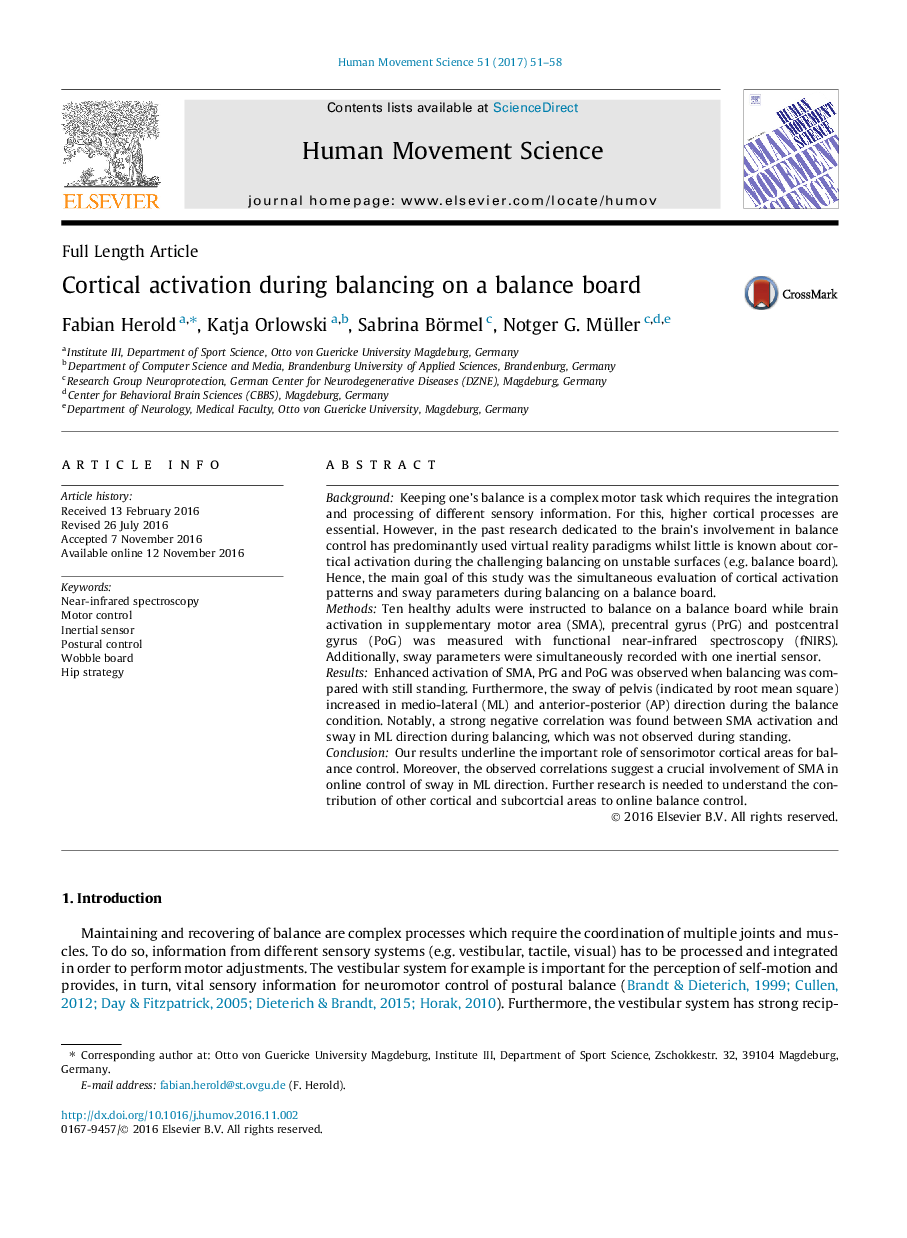| Article ID | Journal | Published Year | Pages | File Type |
|---|---|---|---|---|
| 5042021 | Human Movement Science | 2017 | 8 Pages |
BackgroundKeeping one's balance is a complex motor task which requires the integration and processing of different sensory information. For this, higher cortical processes are essential. However, in the past research dedicated to the brain's involvement in balance control has predominantly used virtual reality paradigms whilst little is known about cortical activation during the challenging balancing on unstable surfaces (e.g. balance board). Hence, the main goal of this study was the simultaneous evaluation of cortical activation patterns and sway parameters during balancing on a balance board.MethodsTen healthy adults were instructed to balance on a balance board while brain activation in supplementary motor area (SMA), precentral gyrus (PrG) and postcentral gyrus (PoG) was measured with functional near-infrared spectroscopy (fNIRS). Additionally, sway parameters were simultaneously recorded with one inertial sensor.ResultsEnhanced activation of SMA, PrG and PoG was observed when balancing was compared with still standing. Furthermore, the sway of pelvis (indicated by root mean square) increased in medio-lateral (ML) and anterior-posterior (AP) direction during the balance condition. Notably, a strong negative correlation was found between SMA activation and sway in ML direction during balancing, which was not observed during standing.ConclusionOur results underline the important role of sensorimotor cortical areas for balance control. Moreover, the observed correlations suggest a crucial involvement of SMA in online control of sway in ML direction. Further research is needed to understand the contribution of other cortical and subcortcial areas to online balance control.
